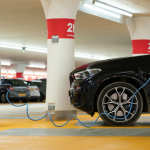China is by far the single largest electric vehicle (EV) market in the world.
Chinese battery-powered vehicles make up around 42% of the global fleet, with over 5.8 million cumulative EVs sold – followed by the EU with 31% and the U.S. with 16%.
But everything from the types of vehicles sold to the ways that batteries are handled in China is different from Western markets.
So what makes the Chinese market unique? What are some key takeaways for OEMs and EV companies to understand about Chinese consumption of EVs?
This article provides an overview of several pieces of information concerning the state of the Chinese EV in 2022.
Cultural & Societal Differences:
For established Western OEMs, the Chinese EV market presents an enticing opportunity and a large consumer base. But for those wishing to hop into that local market, there are a few key differences between what Western consumers want and what Chinese consumers are looking for in their EVs.
Western EV manufacturers often market their vehicles as more eco-friendly versions of existing automobiles – citing large drive ranges and high top speeds as key selling points.
But these don’t resonate with Chinese consumers. Since most Chinese drivers aren’t commuting very far, speed and range don’t hold a lot of importance. Instead, Chinese OEMs focus on the technology within the vehicles and snappy human-machine interfaces to entice customers.
These features include interactive screens in nearly every model, alongside offerings like voice assistants, in-car shopping applications and entertainment programs.
Small cars, big sales:
One of the most visible ways the Chinese EV market differs from the West is in the vehicles that reign supreme. While Americans and Europeans might want vehicles that recreate the size and feel of a sedan or SUV, Chinese consumers more often prefer a smaller, cheaper option.
The best selling EV in China is not a Tesla or a Volkswagen, it’s the tiny Hong Guang Mini EV.
The Hong Guang Mini is produced by SAIC-GM-Wuling Automobile, a collaboration between China’s state-owned SAIC Motor, General Motors and another Chinese company, Wuling Motors.
By the end of 2021, the Hong Guang Mini had sold 395,451 vehicles – far more than the second place option, the Tesla Model 3. With a starting price of just under $4,500, the Hong Guang Mini is marketed as “the People’s Commuting Tool,” and customers in China seem to be along for the ride.
Reduce, reuse, recycle:
The majority of the world’s lithium-ion batteries – the kind that power EVs – are produced in Japan, South Korea and, you guessed it, China. Accordingly, battery recycling capabilities in those countries are developing quickly as well.
Guangdong Brunp — a subsidiary of CATL, China’s largest maker of lithium-ion cells – is able to recycle 120,000 tons of batteries per year. The company can recover enough lithium, cobalt and nickel from those batteries to power 200,000 cars annually.
And that’s just one battery manufacturer.
Additionally, the Chinese government has introduced financial and regulatory incentives for battery companies that source materials from recycling firms instead of importing freshly-mined ones.
Demand outpacing supply:
Despite an overall increased output of EV batteries last year, Chinese battery manufacturers can’t keep up with record domestic and foreign demand.
That record demand, coupled with a global shortage of materials needed for battery production, has led to a growing gap between how many batteries China can produce and how many consumers want.
Factories like those in Xinyu and Guangdong are operating at full capacity, cranking out hundreds of millions of batteries per quarter. But demand for batteries is still expected to outstrip supply for nearly a year.
Record-breaking figures:
Just like batteries, demand for EVs in China is at an all-time high.
In June, 235,000 plug-in cars were sold – a new monthly record.
Throughout all of 2021, over 3.3 million EVs have been sold in China – compared to 1.3 million sold for the entirety of 2020. If sales continue at this rate, China will be the first country to sell 2 million EVs in a year.
What are your thoughts on the Chinese EV market? Are there any trends that Western EV manufacturers can make use of? How do you think the Chinese market will progress in the coming years? Reach out to Inspire Advanced Transportation with your thoughts.






